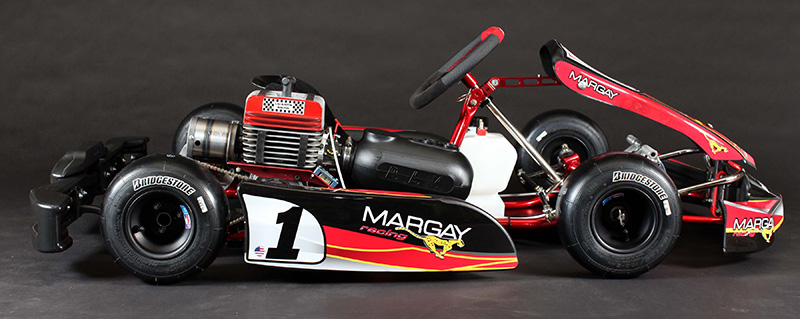

The love of motorsports starts early. With some kids, all it takes is the sight of a racing machine on the course. The grin gives them away. It happens with others the first time they take the driver’s position in a motorized vehicle, even if it’s just a bumper car at the county fair. But for some kids, it goes deeper. For some, the competitive fires burn too brightly to be fueled by mere child’s play. And it’s those kids for whom karting can be the beginning of an avocation or even a career.

Go-karts—now more commonly called simply karts—have been around since the late 1950s, and they are the least expensive way to get into true motorsports. Karting experiences can range from “arrive and drive†indoor or outdoor tracks, where everything is supplied and karts are rented on a per-session basis, to all-out shifter karts with multi-gear transmissions and top speeds in excess of 100 mph. Sanctioned racing can begin as early as age eight in World Karting Association competitions or even earlier in other venues. And karting is where some of the top names in motorsports today logged their first hot laps.
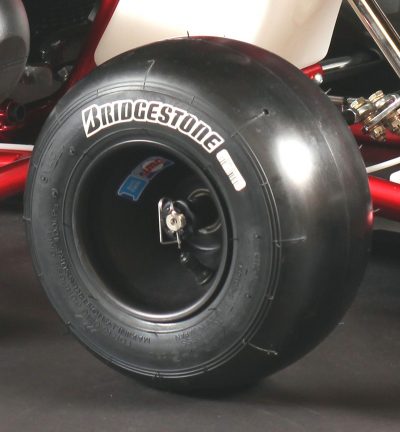
NASCAR stars Tony Stewart, Danica Patrick, Jeff Gordon and Juan Pablo Montoya started in karts. World champion Formula 1 drivers Ayrton Senna, Alain Prost, Michael Schumacher and Kimi Räikkönen started in karts. And Indy 500 veterans Scott Goodyear, Al Unser Jr. and Scott Pruett started in karts.
All those top motorsports pilots began in karting because karts—beginning with the novice ranks and moving through the various classes—are real race cars. They teach a driver about vehicle balance, throttle control, selecting the proper line, cornering and optimizing vehicle setup through chassis stiffness, tire pressure, gearing and carburetor tuning.
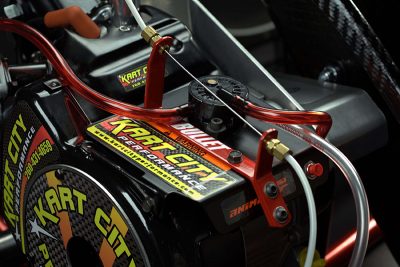
They teach not only competition but also sportsmanship. Karting can bring families together and build a kid’s self-worth and confidence. But a kart will also fit in the bed of a pickup, and a used entry-level kart can cost as little as a few hundred bucks. Like any form of racing, however, karting requires a time commitment, and it does take some money.
Getting Started
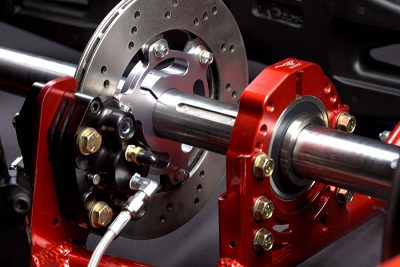
Spectating at an actual kart race may be the best way to gauge a kid’s interest. Make it a whole-family outing: tour the pits; ask questions; watch the drivers you saw in the pits go out to compete. Find out about your local track’s rules, the types of karts and racing it accommodates, what the entry-level class requires. If you can lay your hands on a tech manual, pop for it to get more detail. If the kid shows interest, keep coming back, digging deeper with each visit.

The world of karting is diverse, ranging from short, paved oval tracks to dirt tracks to longer road-racing courses. The most common are sprint courses, which encompass both left and right turns and usually feature short races of up to 20 laps. Oval races—left turns only—may be run on full-size speedways or karting ovals and on pavement or dirt, and they may be indoor or outdoor, with some courses constructed as temporary facilities. The third type, road racing, is similar to sprint racing in that it features both left and right turns, but it involves much longer timed events at high speeds. In most cases, kids start out in sprints and progress through the ranks to higher classes and longer races.
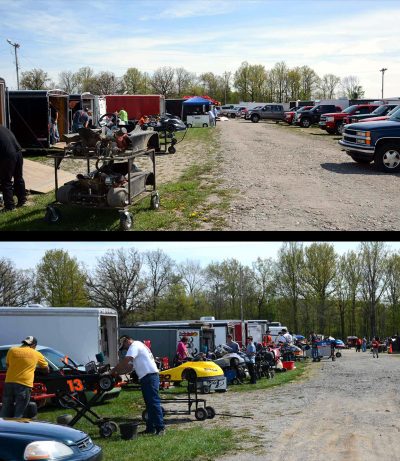
A number of books have been published on karting, but not all of them are of recent vintage. Online sources such as Motorbooks.com and Amazon.com offer the latest and most complete releases, but pay attention to publication dates to get the most up-to-date information.
When it comes time to get behind the wheel, an arrive-and-drive program may be the simplest way to get a taste of actual karting. For a reasonable fee, the youngster will be outfitted with requisite safety equipment, be checked out on a lower-power kart’s operation and take part in a multi-lap session with other drivers of varying experience.
This first session—even the first few—shouldn’t be viewed as competition. It will be a learning experience to get a feel for the kart’s steering, throttle and brake controls as well as the sound and feel of being on the track with others. It can be intimidating, so the adults should be as supportive as possible of the first-timer’s introduction to seat time.
Buying a Kart
Committing to the purchase of a kart should come only after significant research and a few sessions in a rental. The first criteria should be determining the style of racing and at the rules of the racing class. During your spectating visits, try to learn which brands and models of karts are most popular in the class(es) that seem most appropriate for youngsters. Take heed of which models win most frequently, since that’s a pretty good gauge of quality.

Local tracks normally follow an easily accessed set of rules that include technical specifications. Ensure that you understand the requirements and that any kart you consider will qualify for the type of racing you or your child want to pursue. Then you’ll have to decide on whether to buy new or used.
Most newcomers gravitate toward used setups for obvious cost reasons. And that can be a very good way to start, assuming that you can find a well-maintained, properly equipped and technologically up-to-date machine. On the other hand, buying new ensures that you don’t wind up paying for somebody else’s mistakes. At this stage, it’s prudent to again seek advice from seasoned karters who can spot obvious flaws and steer you away from bad choices.

Avoid brands that are not well represented at the track. You’ll want one that is relatively easy to find parts and service for. Again, ask around in the pits about the quality of the karts you’re interested in and local shops that racers recommend for that brand and model.
One of the advantages to buying used—assuming your can find a quality kart that hasn’t been completely wrung out—is that it will come with some spares. It will also be substantially less expensive, since it will have depreciated the moment it left the new-kart dealership. On the other hand, a used kart will undoubtedly require investments of time and money to repair or refurbish into race condition.

If you decide to buy new, you’ll need to do yet more research. You want to find a dealer with a top-notch reputation and the ability to provide parts and service when needed. Some dealers build their karts themselves, so you’ll want to find one with seasoned, expert assemblers using quality components. Pre-assembled karts are typically put together with price in mind, so they may feature less-than-the-best parts and may require upgrades after the purchase.
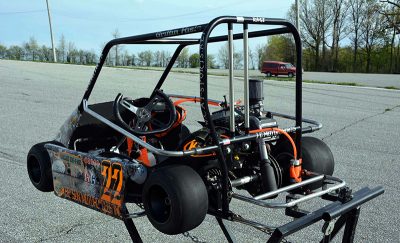
Of course, you don’t have to buy a complete kart. If you enjoy doing the work yourself, you can purchase the various assemblies and build your own kart. An Internet search will reveal a variety of parts sources for everything from engines and chassis to sprockets, tires and seats. And building the kart with your kid can be what we now call “teachable moments.†Just be sure that what you build meets the rules for the track and class you plan to compete in.
Kart prices vary widely, depending upon the type of racing you’re interested in and whether you buy new or used. You can get pre-owned karts very cheaply—a few hundred bucks, in some cases—but you’ll get what you pay for. Base-level new karts that are designed specifically for youngsters starting at age 4 and up are equipped with small engines (usually 50cc) and simple mechanicals. New, entry-level, race-ready karts of this type start at about $2,500 and can go up to $5,000 and more for top-level equipment. By the time you progress to the shifter-kart level, prices escalate to $10,000 or more, but you’ll have been involved in the sport for a significant period before you advance that far.
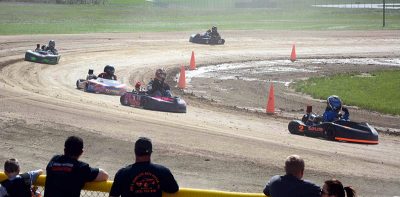
In addition to a kart, the racer will also need approved safety equipment that includes a helmet, a racing a jacket or suit, a neck collar and gloves at minimum. A rib protector and a head-and-neck device, while not usually required, are also recommended. Check with your track’s tech specifications to determine what type and quality of safety gear is required.
You’ll need a truck or trailer to haul the kart and its associated tools, spare parts, fuel, lubricants and miscellaneous equipment such as a kart stand, which makes moving the kart easier and gets it up off the ground when you need to perform maintenance. You’ll probably want some type of pit cover or tent to keep out of the sun or inclement weather, and you should also factor in the cost of entry fees and travel expenses (even if it’s only the cost of gas to get to the track).
The costs can mount, but karting is still a lot less expensive than many other recreational activities. It also offers educational opportunities in a variety of disciplines that include not only vehicle dynamics and safe-driving techniques but also physics, mechanics and even a bit of chemistry. Best of all, though, is the time you’ll spend with your kid. That will be priceless.
KARTING SANCTIONING BODIES | |
| World Karting Association 6051 Victory Ln. Concord, NC 28027 704-455-1606 www.worldkarting.com The largest organization in the United States. Sanctions oval, sprint and enduro competitions.International Kart Federation 1609 South Grove Ave., Ste. 105 Ontario, CA 91761 909-923-4999 www.ikfkarting.com Original sanctioning body for karting. Runs oval, sprint and enduro races. | Superkarts USA P.O. Box 2161 Noblesville, IN 46061 317-774-7025 www.superkartsusa.com Specifically for high-performance and shifter karts.Commission Internationale de Karting-FIA (CIK-FIA) 2 Chemin de Blandonnet, CP 296, CH-1215 Genève 15, Switzerland +41 22 306 10 80 fiakarting.com/page/home World karting sanctioning body. Karting division of the Fédération Internationale de l’Automobile (FIA). |
by Steve Campbell

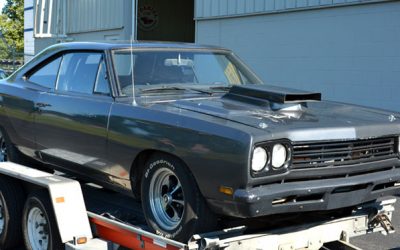
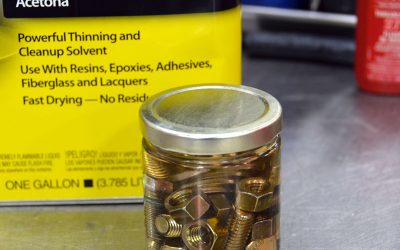
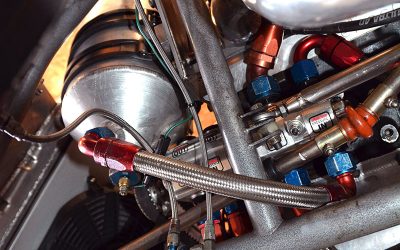
0 Comments